Last Updated on May 31, 2024
In 2002, M. Night Shyamalan had already done the impossible in Hollywood: He was a director who became a household name. At the time, you couldn’t probably only say that about a handful of directors, the usual suspects: Spielberg, Scorsese, Tarantino. Maybe a few others. But after the blockbuster success of 1999’s The Sixth Sense, which became one of the biggest movies of all time, not to mention a Best Picture nominee, Shyamalan was now a brand. One year after The Sixth Sense, Shayamalan brought us Unbreakable, a brooding, suspenseful drama about a man who’s burdened with a great responsibility he doesn’t even know about. To say it was an unusual take on the superhero genre would be an understatement, and as hard as it is to believe, superhero movies were not a “thing” when Unbreakable came out. So the movie, while respected and destined to build a loyal following, was not held in the same regard as Night’s breakout hit. So what was the still-young director going to do to prove the cultural touchstone that was The Sixth Sense was not a fluke? He’d have to make another rollercoaster ride for an audience eager for original storytelling. That’s how Signs (watch it HERE) was born, and we’re going to find out just WTF Happened to this movie.
Night had complicated feelings about the somewhat muted reaction to Unbreakable, which he himself described as a movie filled with burdens. Both The Sixth Sense and Unbreakable – while not without their fun moments – are movies with overtly somber atmospheres. Believe it or not, it was a trip to Denny’s that helped spur on Signs. In an interview conducted some years later, Night described being in a Denny’s and seeing a family having a very serious meal, before noticing another couple sitting in silence. Night found that he wanted to make those people – or anyone who was going through a rough patch – feel better. He called Disney, which had produced The Sixth Sense and Signs, and told them he wanted to make a movie that was joyous, almost childlike in its point-of-view. It would still have conflict in it, but it wouldn’t carry the weight of the world on its shoulders the way his past two movies seemed to. He trained himself not to write his new script if he was feeling uptight or unsettled; he’d only work on it during his lighthearted moods, conjuring up one fun idea after the other.
Ultimately, Night said Signs was the easiest script he ever wrote. That’s food for thought when considering the movie’s central plot, which revolves around a minister who has lost his faith in God after the accidental death of his wife. Never one to hide his own faith, Night saw an opportunity to make a movie about a man’s conversation with God; a man who was literally looking for signs from above. With this theme in place, Night returned to a phenomena he’d always been fascinated by: crop circles. Intrigued by the fact that corn stalks are quite tough to break, Night reasoned that crop circles just had to have explanations that perhaps weren’t terrestrial. Now he had a sub-genre to work with: the alien invasion thriller.
Night wasn’t interested in telling a big, Independence Day style extravaganza, though. For him, a smaller, more intimate drama would better fit his overall theme of faith in the face of disaster. His main inspirations for the scope of his story would be George Romero’s iconic siege movie Night of the Living Dead, Alfred Hitchcock’s classic end-of-the-world thriller The Birds, and Don Siegel’s Invasion of the Body Snatchers, with its subtle, powerful suspense and paranoia. Of course, you can throw a little War of the Worlds in there for good measure.
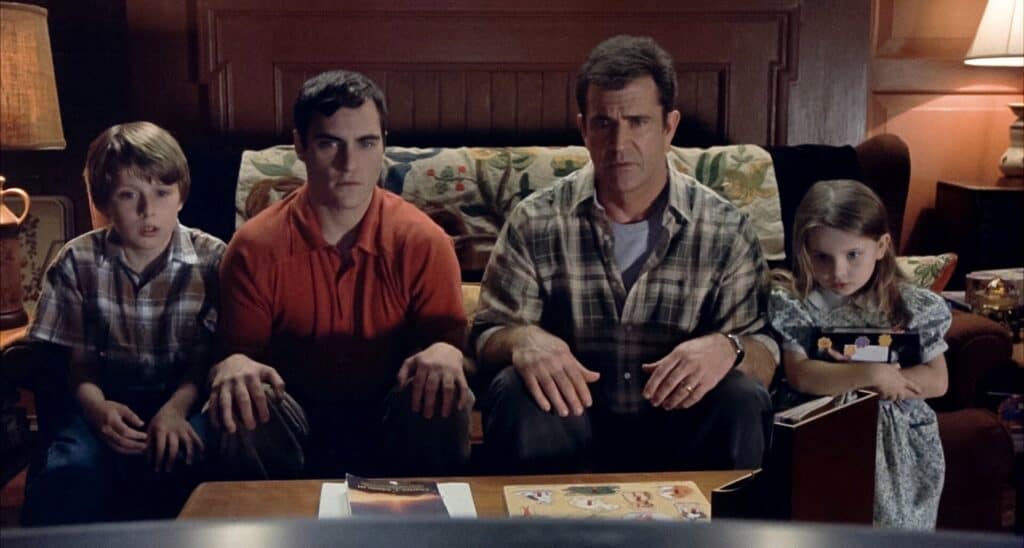
The minister at the heart of the narrative, Graham Hess, would not be facing the invasion alone. Shyamalan initially envisioned a large family for Graham to interact with during the crisis, as the event would take place during a busy Thanksgiving gathering at the Hess farm. But Night ultimately found he had too many characters on his hands, comparing the scenario to The Towering Inferno, and began to whittle down the amount of characters to just four, the immediate Hess family consisting of Graham, his brother, and Graham’s two young children. Night also had an idea for a teacher character to be involved, imagining his The Sixth Sense star Toni Collette in the role, but he eventually cut this character out as well.
Additionally, his original idea of filming the entire movie inside the farm house was abandoned; he’d allow the characters to venture out once in a while to the neighboring village. Still, this was predominantly going to be a sci-fi epic on a rather small scale.
If you believe the rumors, Graham was initially going to be an older man than he ended up being, and Night supposedly had his sights on Hollywood royalty for the part. Clint Eastwood was approached to star, but he passed on it. Night then allegedly took the offer to Paul Newman, who was in his mid-70s at the time, but Newman declined the part. Needing a true leading man, Night turned to Mel Gibson to play a role that was far from his usual heroes in action-heavy blockbusters. Very protective of his screenplays, Night had his cousin drive the script to Gibson’s house so the actor could read it. As Gibson recalled, he called Night immediately after reading Signs and said yes to the part. A man of faith himself, Gibson saw the themes of spirituality and belief very clearly in the script, which is what made him want to take it on. Gibson would later say he’s only worked with three geniuses in his career: Peter Weir, George Miller, and M. Night Shyamalan.
For the secondary lead role of Merrill, Graham’s younger brother, Night offered the part to Mark Ruffalo, who accepted. Unfortunately, a few weeks before production was to begin, Ruffalo had to have surgery on his inner ear, which made his participation in the film impossible. Night turned to Joaquin Phoenix, then just coming off an Oscar nomination for Gladiator. At the time, Phoenix was happy to have a role that was a bit more lighthearted than the ones he was known for – as he put it, “I didn’t get arrested or kill anybody, so that was really good.”
The two children in the film would go on to be recognizable adult thespians: Rory Culkin and Abigail Breslin. Apparently the kids were so good at their jobs that they forced their adult co-stars to up their games – especially during the dramatic dinner scene, which the youngsters blew the doors off of.
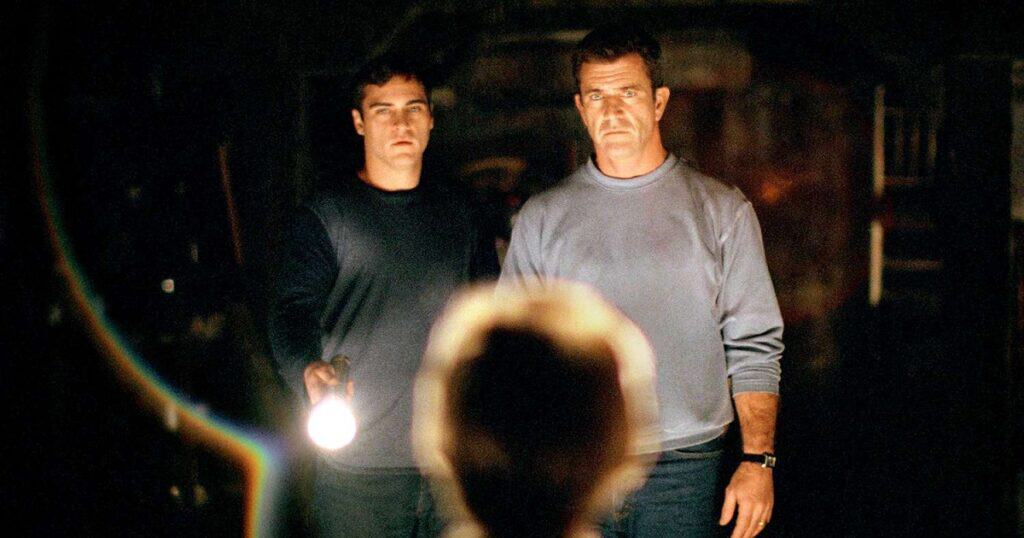
As is the case with all of his films, Night storyboarded the entire thing front to back. Much like a screenplay, Night does different drafts of the storyboards as time goes on, and in total it takes somewhere in the neighborhood of three months for him to complete them all. These he shares with his most trusted collaborators, like cinematographer Tak Fujimoto, and composer James Newton Howard. The latter is interesting because Night wants Howard to start working on themes for the film before production has even begun; he wants the composer to work off the story being told and not necessarily the footage he’s being delivered. So it goes that the iconic and intense theme for the film was composed before principal photography even began. Night had wanted a score that was Bernard Herrman-esque in how it’s almost visual in its boldness. Night was able to take that theme music to preproduction meetings and play it for his crew, so they knew exactly what kind of movie they’d be making. He also decided to use the theme in the opening credits to give the audience a similar notion of what they were getting into.
Production took place, of course, in Night’s home state of Pennsylvania. Bucks County, Pennsylvania, to be precise. The production was able to find a perfect place in the form of Delaware Valley agricultural college, where they actually had corn fields at their disposal. The college even planted more corn for the movie’s benefit. The crop circles in the film are indeed real, as Night was then famously averse to using too much CGI, and these formations were shot in upstate New York.
The Hess house was built from the ground up right near the college, with interiors that could actually be used, though much of the film’s interiors were shot on a soundstage. The house was built in a Victorian style to give it a classic all-American look.
Shooting on Signs was scheduled to begin September 12, 2001. Yes, the day after 9/11. Night recalls that the effects of the tragedy were naturally felt throughout the entire cast and crew, the latter especially since plenty of crew-members were from nearby New York. Ironically, the first scene shot days after the attacks was perhaps the most dramatic in the film, when Graham speaks to his wife for the last time as she lays dying after her car accident. Night intentionally wanted this to be the first scene shot because it colors everything the Graham character does afterward, and he also wanted Mel Gibson to tackle a highly emotional scene right off the bat. The fact that they ended up shooting this right after 9/11 is almost like some kind of sick cosmic joke… Before shooting, Night and the crew held a candlelight vigil for those who lost their lives on that fateful day.
That unfortunate prelude aside, Night would eventually find Signs to be the easiest shoot of his career – even admitting himself that his shoots are usually torturous. To further involve himself in his work, he made the decision to play a pivotal supporting role, that of the man involved with Graham’s wife’s car accident. Funnily enough, he hadn’t told Gibson that he was playing the part, so the star was quite surprised when he found out who his scene partner was going to be. Shyamalan lost his grandfather one day prior to shooting the sequence, which made his raw emotions in it all the more real.
The other main players in the film are, naturally, the extraterrestrials themselves, who went through a bit of a transformation over time. Initially, Night saw them as being translucent, able to completely camouflage themselves to the point of invisibility. But early CGI tests disappointed the director, and a revised vision was brought to the table, one that would still see the aliens have the ability to blend into their environments but without going completely invisible.
ILM was hired to bring the creatures to life; CGI was utilized for the majority of their bodies, though a practical arm was built for the film’s main alien in the memorable pantry sequence; it was again used to hold Rory Culkin’s body toward the very end. The fact that we barely see the creature was of course by design.
The movie’s other iconic sequence, that of the birthday party video that reveals the alien in full for the first time, was shot by Night using an ordinary household camcorder. It was all done in one take and proved to be the most compelling footage in the entire film.
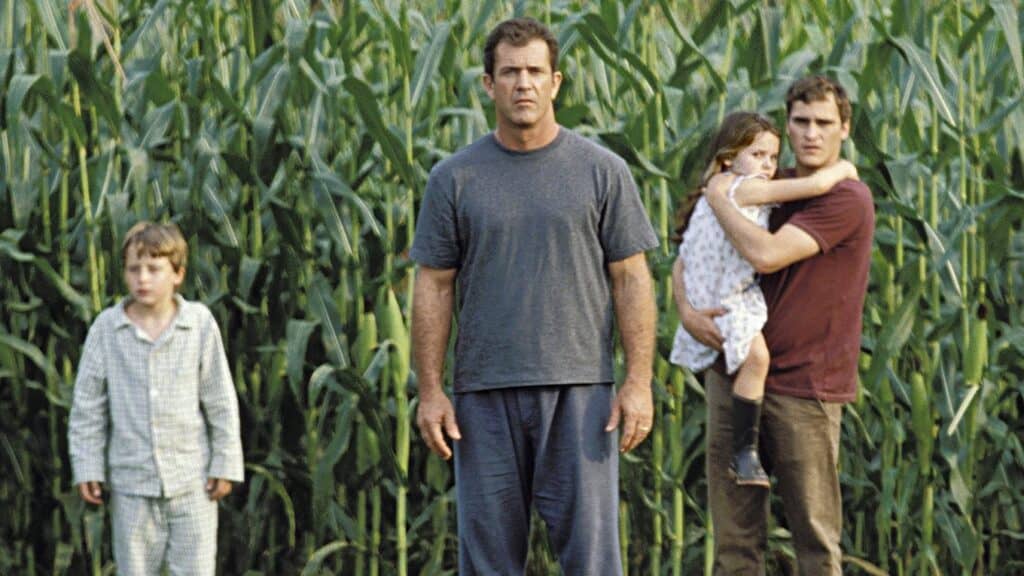
As he’s involved in all aspects of this movies, Night made sure he was heavily instrumental in how Signs was to be marketed. He allegedly told Disney that he didn’t want Mel Gibson’s face on the posters, because he didn’t want the film being pitched as a star vehicle; he preferred the marketing to focus on the mystery and intrigue of the plot. Furthermore, he didn’t want the trailers to say “from the director of The Sixth Sense” because he wanted the new feature to be sold on its own merits. That said, much of the material leading up to the film’s release pitched it as “M. Night Shyamalan’s Signs.”
Signs came out on August 2, 2002, a little less than a year after production began. It opened with a bang, making $60 million during its first weekend, the second biggest August opening of all time. Critics were generally kind to it, and audiences ate it up, and if it fell short of having the kind of cultural impact The Sixth Sense had, that’s because most movies simply can’t achieve such heights. Signs ended its box office run with over $400 million worldwide, a success by most measures.
Looking back, Signs was something of an end of an era for M. Night Shyamalan. His following feature was “The Village,” which many thought was a huge step backwards for the director. After that came “Lady in the Water,” another major blow to the reputation of the man who was at one time thought as the heir to the throne of geniuses like Spielberg and Hitchcock. That said, lucky for us Night is still at it, making thrillers and filling us with hope that he can hit some of those early high notes once again. You can’t help but root for the man, who is an artist still determined to show us sights that no one else can. We should have faith he can still pull it off.
A couple of the previous episodes of WTF Happened to This Horror Movie? can be seen below. To see more, head over to our JoBlo Horror Originals YouTube channel – and subscribe while you’re there!







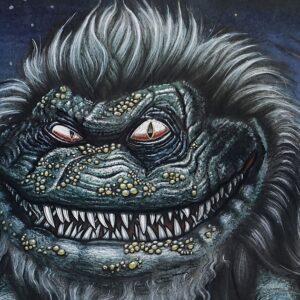
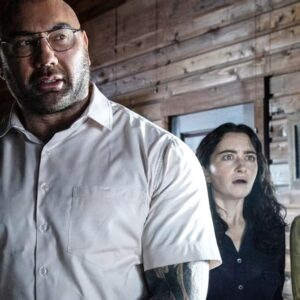
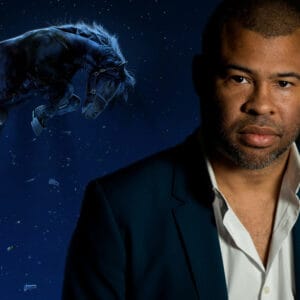

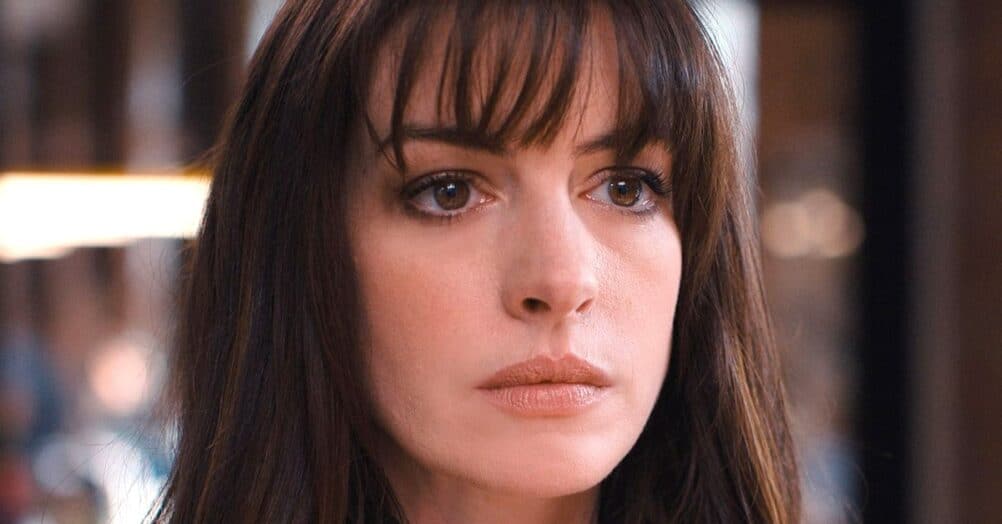

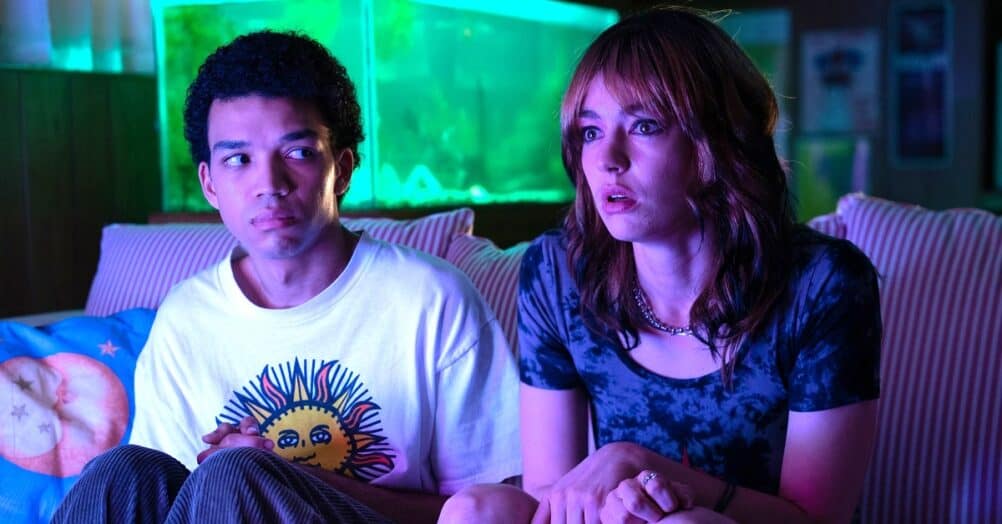


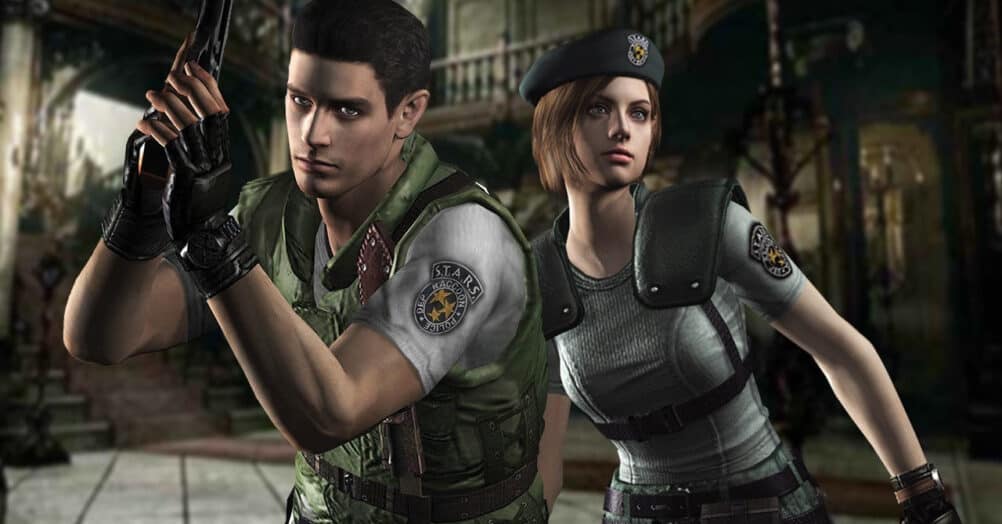



Follow the JOBLO MOVIE NETWORK
Follow us on YOUTUBE
Follow ARROW IN THE HEAD
Follow AITH on YOUTUBE